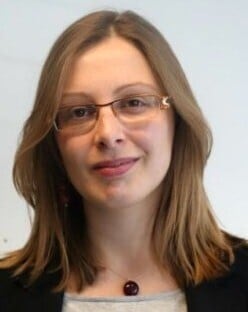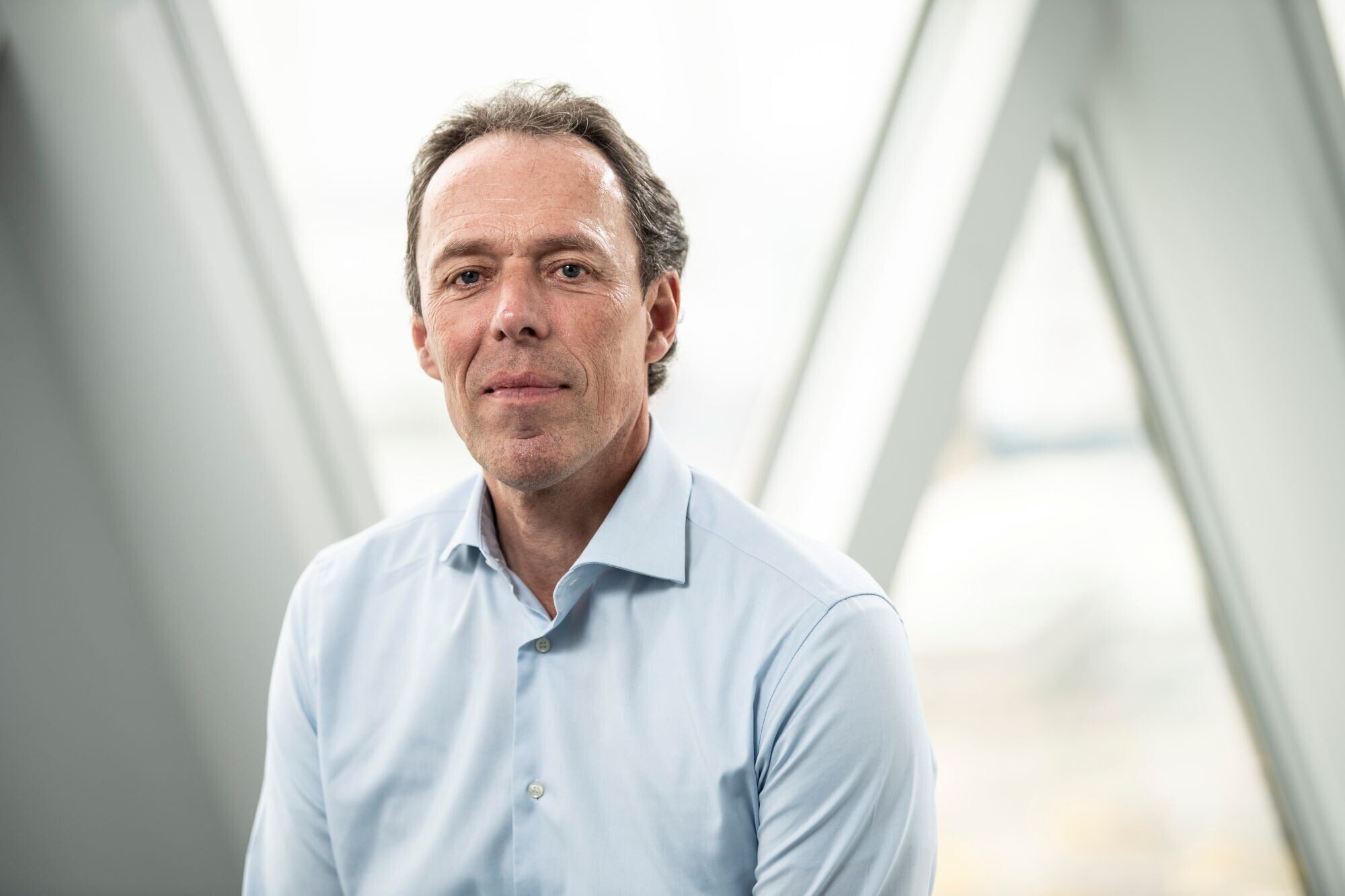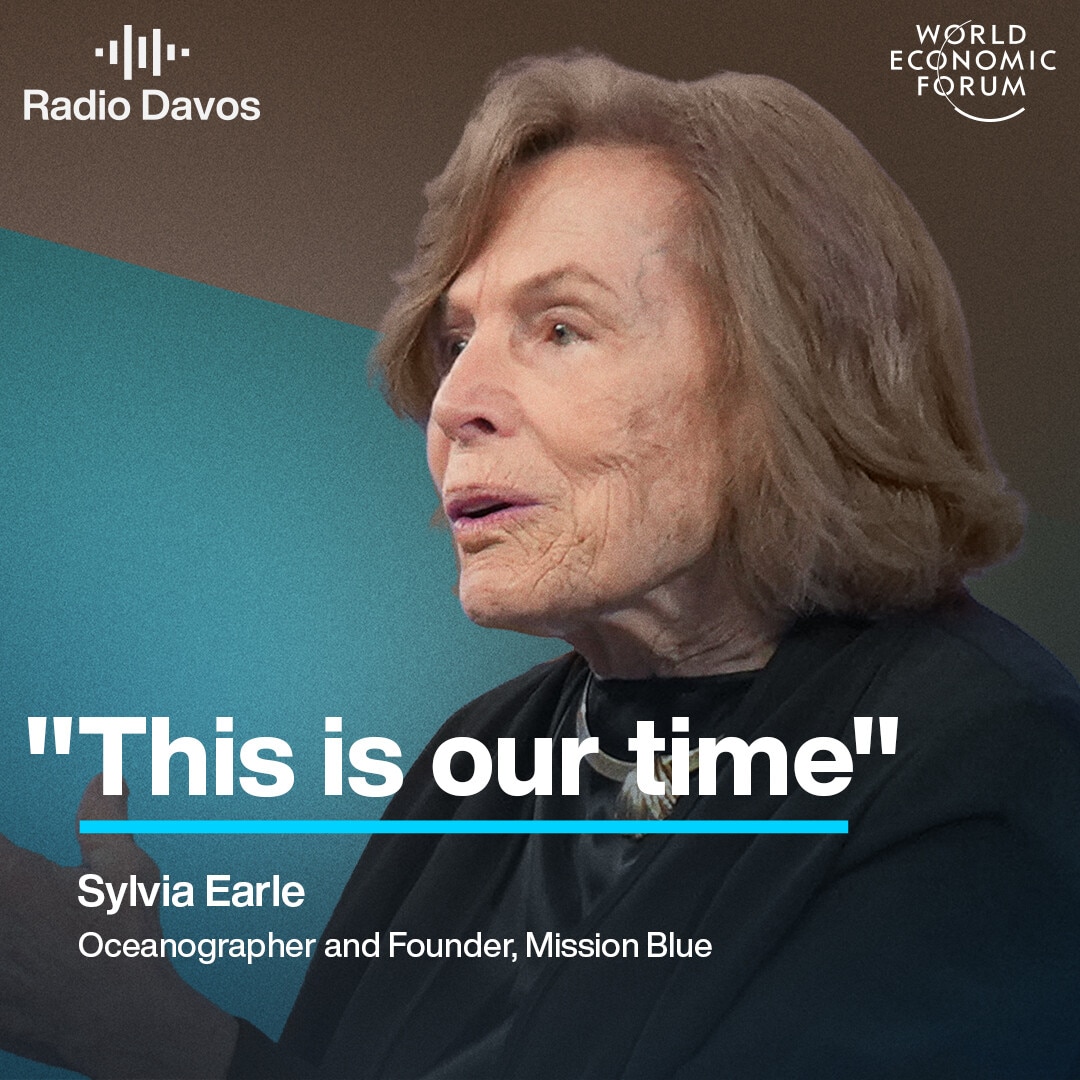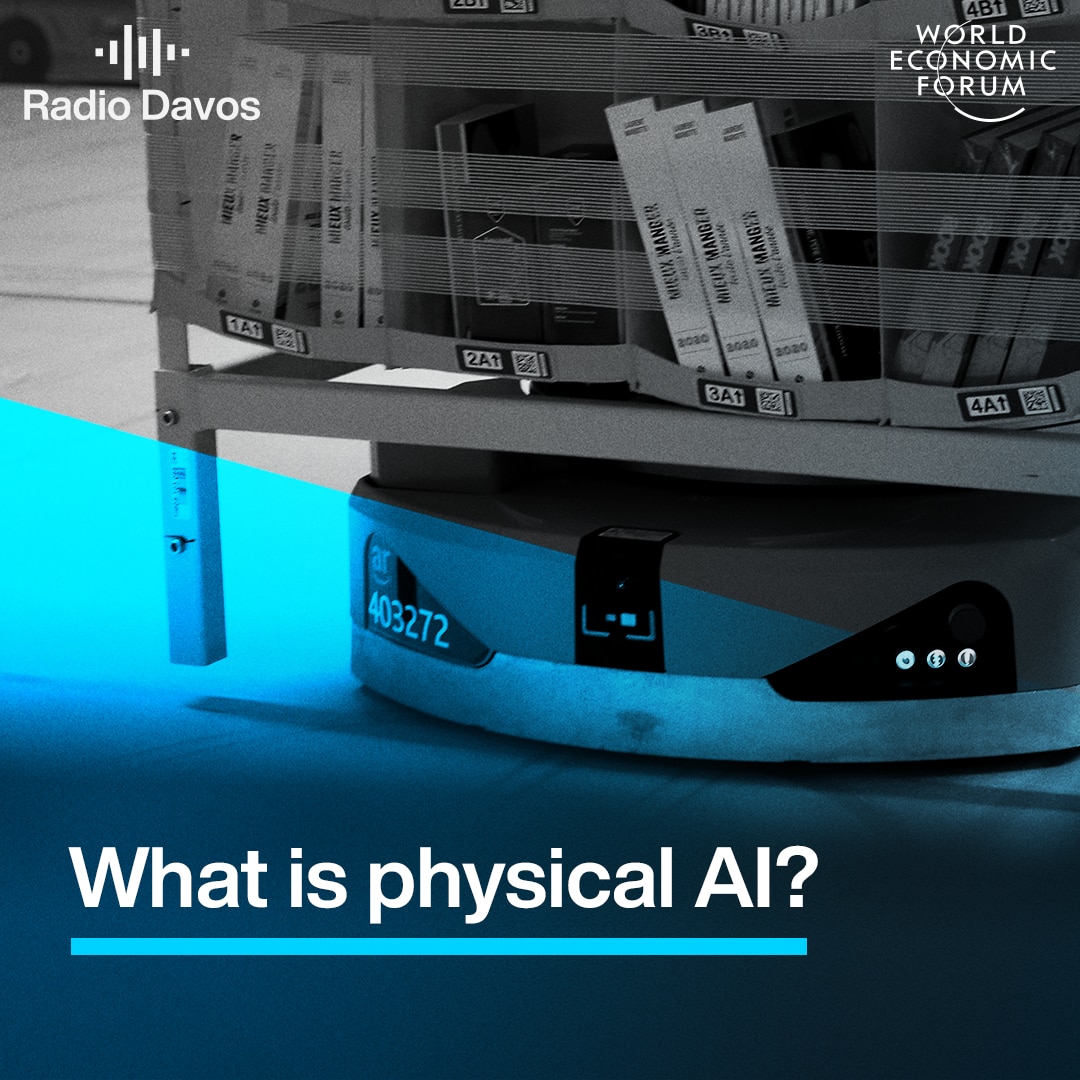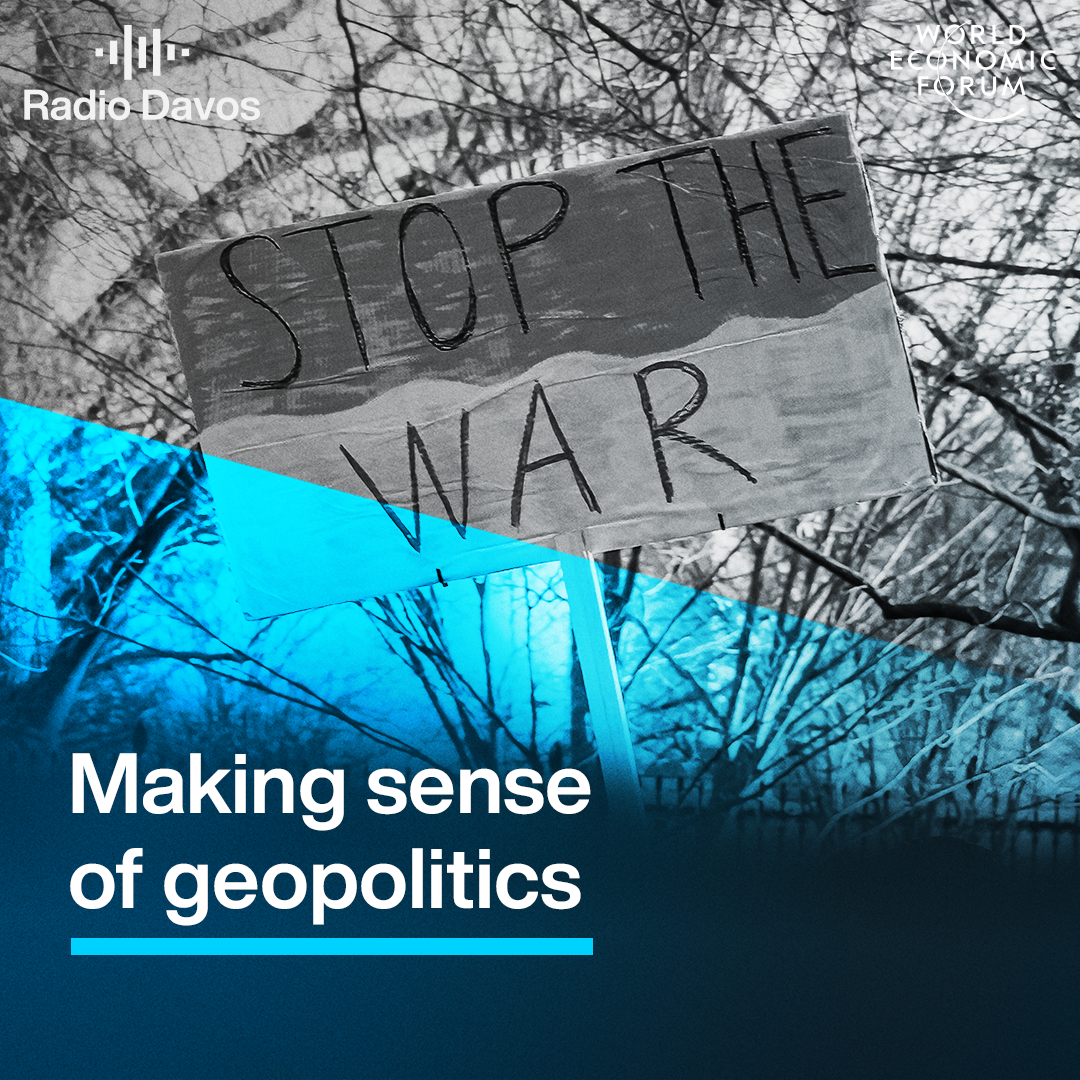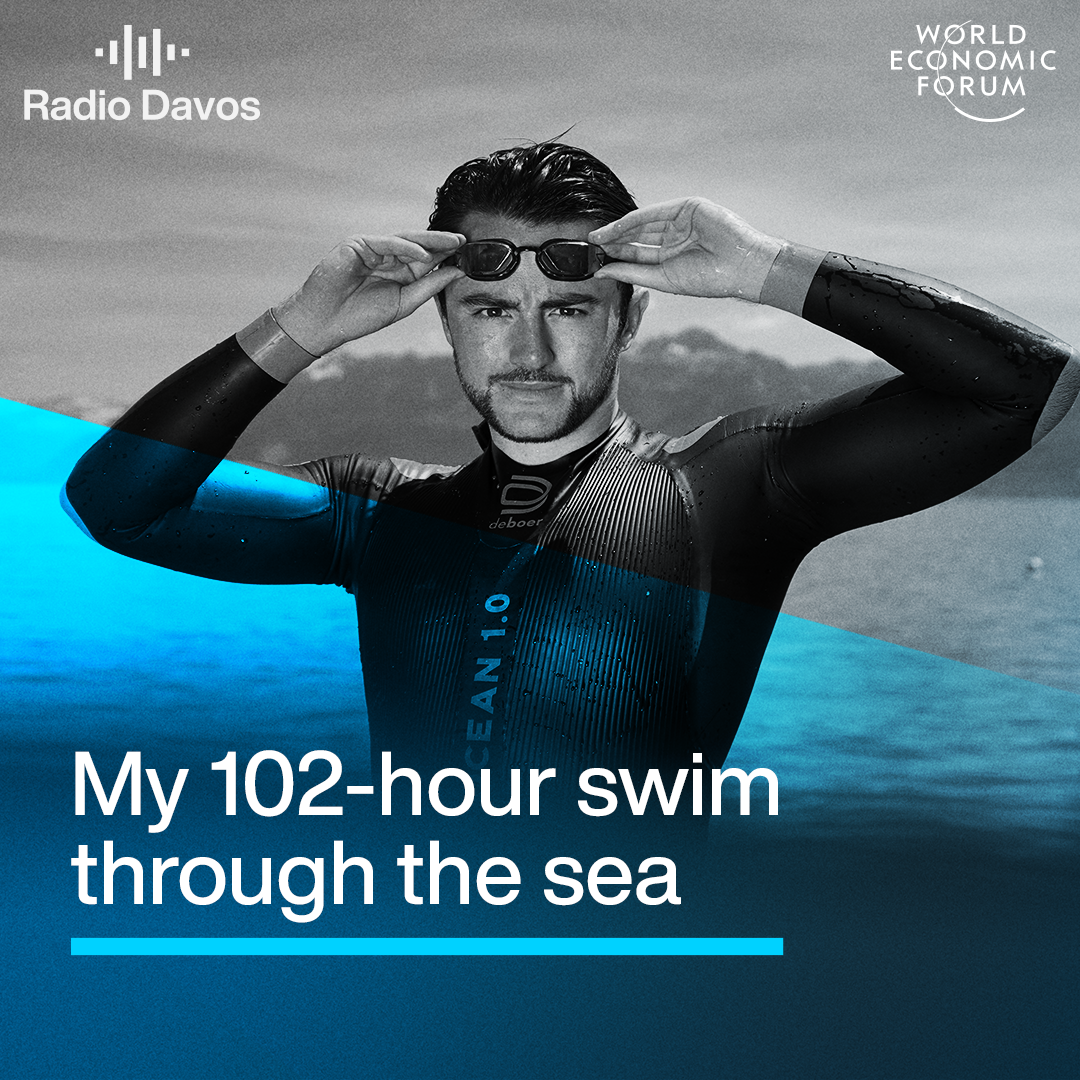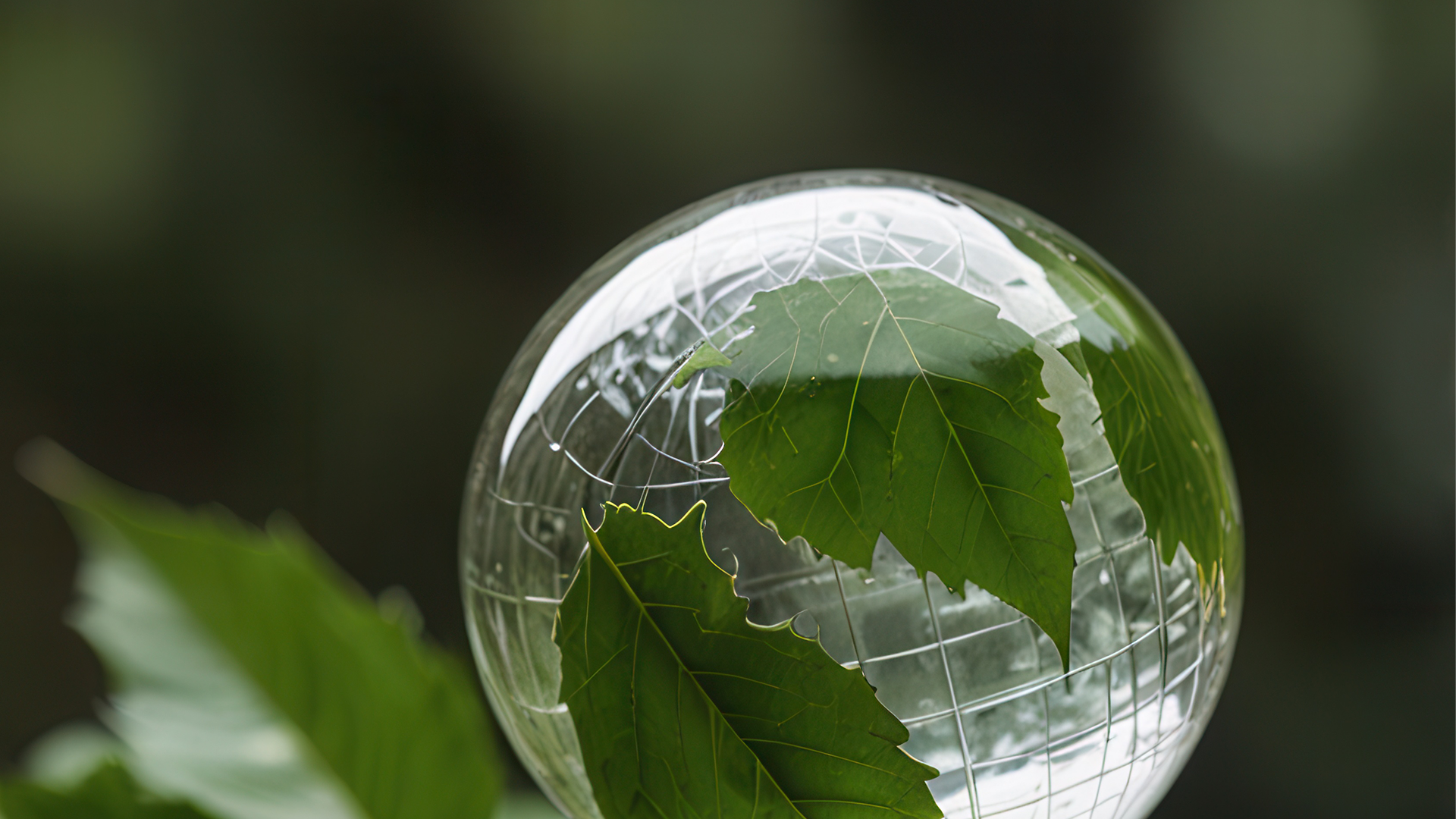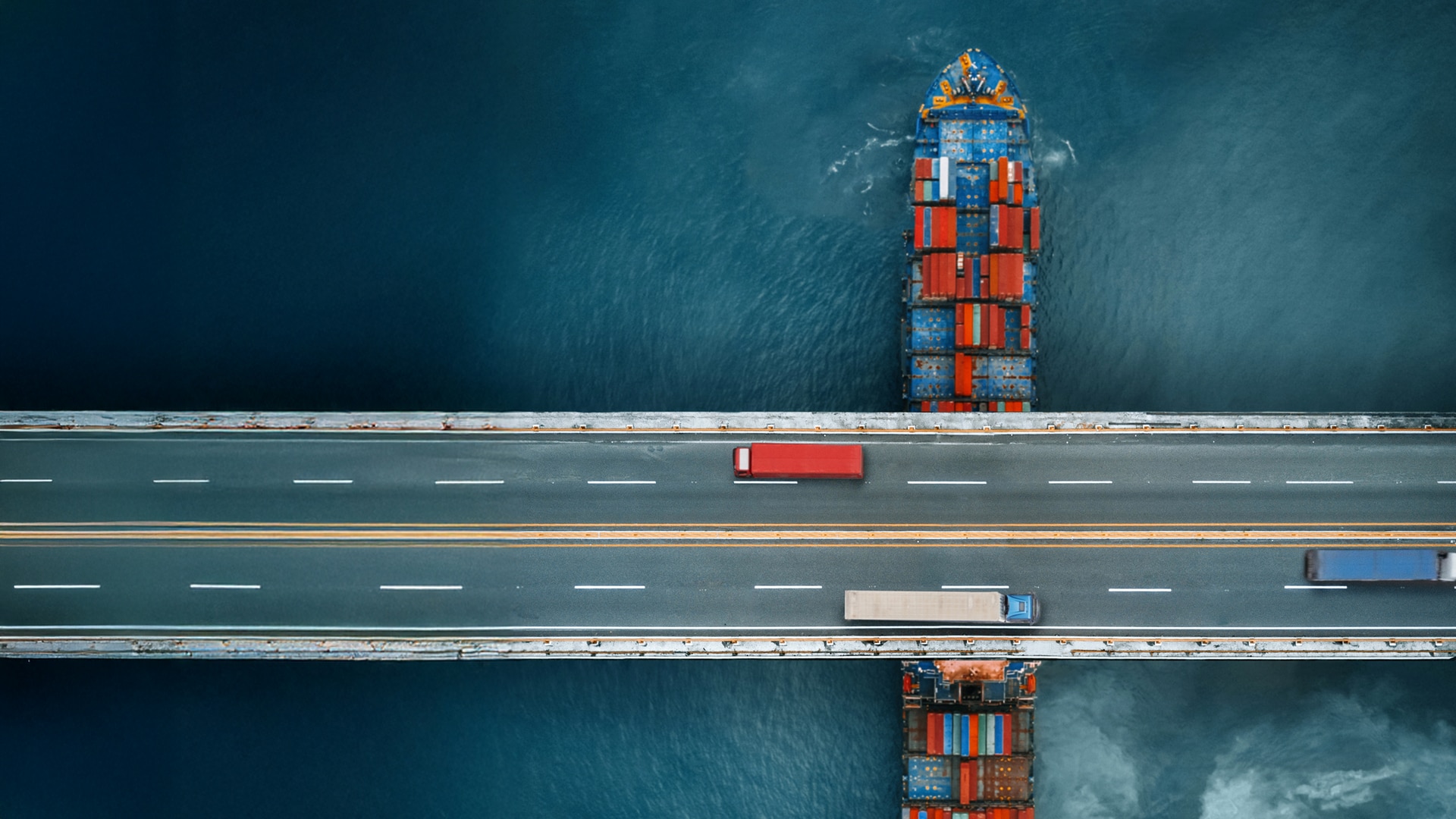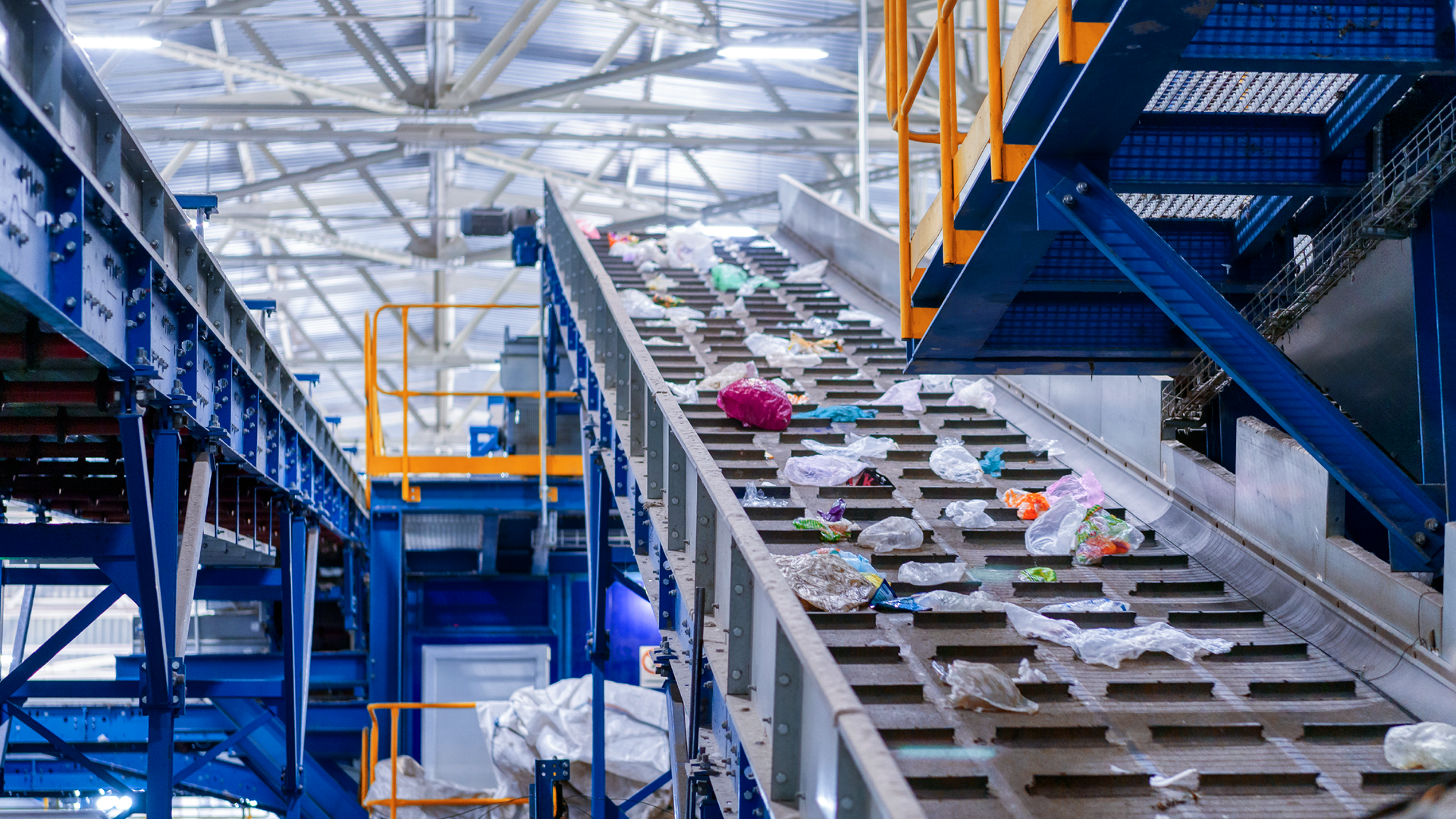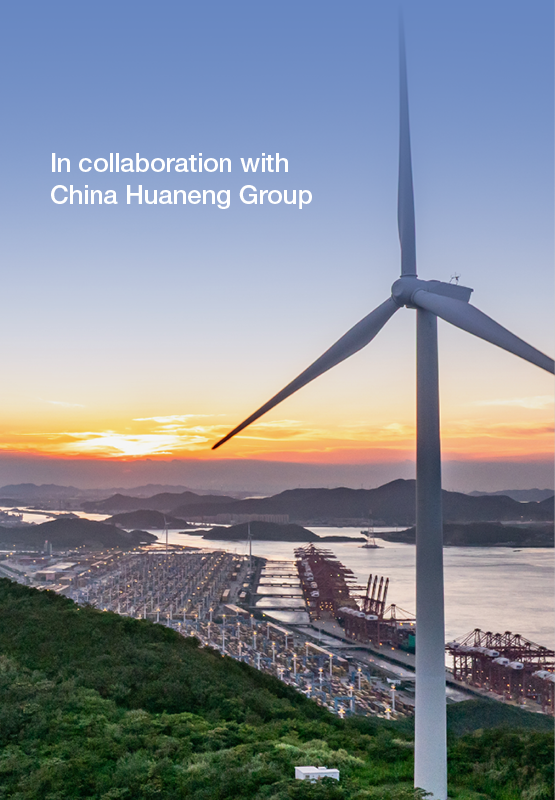"All of this is teamwork" - how 'industrial clusters' are accelerating the energy transition
ポッドキャスト・トランスクリプト
This transcript has been generated using speech recognition software and may contain errors. Please check its accuracy against the audio.
Faustine Delasalle, CEO, Mission Possible Partnership: The good news is that it's possible and the technologies to decarbonize those sectors exist. But those technologies are still in their infancy and to change that you need to get to scale in production.
Robin Pomeroy, host, Radio Davos: Welcome to Radio Davos, the podcast from the World Economic Forum that looks at the biggest challenges and how we might solve them. This week we look at how ‘industry clusters’ can help boost the economy, jobs and the energy transition.
Faustine Delasalle: Many companies are already co-located in the same geography, but to transition those industrial clusters from emitting industrial processes towards clean industrial processes, there's a whole range of things that need to happen, and some of those things are better done as a group.
Robin Pomeroy: We hear from an industrial cluster in Spain where stakeholders are working together to scale up green hydrogen.
Maarten Wetselaar, CEO Moeve: The Green Hydrogen Valley in Andalusia is by a mile Europe's largest green hydrogen project.
All of this is teamwork. There's nobody can do this by themselves. we've been building coalitions between customers, logistics providers, authorities, how can we get these chains going? And once they're going, how we can scale them?
Robin Pomeroy: And the head of the port of Antwerp-Bruges explains the power of ports to help wider industries transform and thrive
Jacques Vandermeiren, CEO of the Port of Antwerp-Bruges: The energy transition of a shipping company will happen on sea and on water. But the biggest part will happen on land in the different ports
Robin Pomeroy: I’m Robin Pomeroy at the World Economic Forum, and with this look at how industry clusters can transform the way we make and move goods…
Maarten Wetselaar: We can scale up and have impact this decade, which is so important.
Robin Pomeroy: This is Radio Davos
Welcome to Radio Davos where we're talking about the energy transition in industry - particularly how so-called industry clusters can help the switch to energy that is clean, resilient, and cost competitive.
In the episode today we'll be hearing from two such clusters - the Port of Antwerp-Bruges in Belgium and the Andalusia Green Hydrogen Valley in Spain. There are over 35 such industrial clusters around the world, supported by the World Economic Forum’s Transitioning Industrial Clusters (TIC) initiative, to drive economic growth, employment and to cut greenhouse gas emissions.
First though, I spoke to the head of the Mission Possible Partnership - an organisation that works to advance the energy transition in industry and also puts a strong emphasis on industry clusters or ‘clean industrial hubs’.
Robin Pomeroy: I am joined by Faustine Delassalle, CEO of the Mission Possible Partnership.
Robin Pomeroy: How are you today?
Faustine Delasalle: Very good, thank you. I'm glad to be with you.
Robin Pomeroy: Tell us, what is the Mission Possible Partnership?
Faustine Delasalle: The Mission Possible Partnership is a not-for-profit organisation that is on a mission to advance global clean industry transformation. We've been up and running since 2019 and we're really working with corporate leaders but also finance government civil society leaders to unlock investment in the production of clean materials, clean fuels, clean chemicals.
Robin Pomeroy: Are those the sectors you're working with?
Faustine Delasalle: Indeed, so it covers sectors like steel, cement, aluminium on the materials front, chemicals production, ammonia, methanol, other forms of chemicals, but also fuels for the shipping industry, for the aviation industry.
Robin Pomeroy: What is the challenge? I mean, you've got these big industries. Why don't they just get on with it themselves and decarbonise? Why do we need a Mission Possible Partnership?
Faustine Delasalle: Well, the good news is that it's possible and the technologies to decarbonize those sectors exist, are either already at maturity or close to maturity. But those technologies are still in their infancy so they still cost a bit more than producing as we do today and to change that you need to get to scale in production, growing production to reduce cost over time.
And to get through that initial hurdle, then companies need support. They need an ecosystem around them and policy interventions to really help them take those first steps until we can reach cost parity and see those technologies deployed at scale.
Robin Pomeroy: You're bringing stakeholders together like the World Economic Forum does. Why is that so important? Why is collaboration so important
Faustine Delasalle: What's really interesting in this sector is that to be able to transition, for instance, your steel production from a coal-based process to a renewable-based and hydrogen-based processes, you need a whole set of new partnerships.
You need a better form or a different form of iron ore, so you need, as a steel manufacturer, to have different partnerships with your iron ore producer. You need new forms of energy. So you need new partnerships with clean energy producers that you didn't work with before. You also need to work much more closely with your buyers because they'll have to understand that new product that you're buying and potentially be willing to pay a bit more for it.
And to then close the financing of your plant, you also need some policy interventions and you need financing mechanisms and financiers who understand the specificity of a clean steel plant.
So that really requires dialogue across the whole ecosystem so that you can create the conditions for investment, improve the investment case and ensure everyone has the confidence to go ahead with investments in a plant like this.
Robin Pomeroy: And one way of fostering collaboration is to have something called clusters or hubs or even green corridors. Can you tell us what we mean by those buzzwords?
Faustine Delasalle: We've been working on clean industrial clusters for several years now with partners at the Bezos Earth Fund and RMI and at the World Economic Forum.
And what we see is that many companies are already co-located in the same geography generally around ports because that's where naturally they've come to be able to trade their commodities.
But to transition those industrial clusters from emitting industrial processes towards clean industrial processes, there's a whole range of things that need to happen, and some of those things are better done as a group.
I'd say there are four things primarily that clusters are very useful for.
One is to ensure you have the right infrastructure. Because all of the companies operating in the same area will rely on the same electricity infrastructure the same hydrogen infrastructure the same carbon infrastructure, also the same port infrastructure. So they need to come together to define what that new infrastructure needs to look like.
The second thing that really matters at cluster level is to be able to engage policy makers locally, at state level, at national level, and having a joint corporate voice to engage policy makers on what they need to make their steps towards decarbonization.
The third thing is engagement with the local community and that we have come across again and again in our work. You need to be able to engage with people who live locally, who work locally, to make them understand the benefits of a transition to clean, but also to help figure out how we can boost the benefits for those local communities and for companies that matter. Because if the local community isn't on board, then you'll face legal challenges that are lengthy and costly when you try to build new plants.
And the final thing is more intangible, but I think it really matters, is that it boosts confidence of everyone. The fact that everyone is coming together, talking about that journey, makes people more confident that they can take those steps. So it boost leadership across the corporate community, but also with policymakers.
Robin Pomeroy: Could you give us some examples of where these hubs or clusters are actually happening right now?
Faustine Delasalle: So we've been working in Houston, Texas for three years now. And we've really seen those different dimensions that I was talking about come together with the local community, the Houston Energy Transition Initiative, we've been able to map out the needs for clean energy infrastructure across the whole cluster. We've also seen companies work together on engaging state authorities. For instance, on questions of planning and permitting.
What was really interesting is that I was in Houston back in February this year, so after the inauguration of the new federal administration. Despite the context, which was quite uncertain for companies investing in clean energy, there was still momentum and a feeling around the room. That they were all into this together and that they would stick with the direction of travel, whatever happens at federal level.
And that I think was approved that three years into that process, there's real trust that has been built across that business community that then boosts everyone in the right direction.
Robin Pomeroy: That's really interesting, isn't it? Because the pendulum is constantly swinging on climate change over the years and the decades. And it's swung, certainly in the US, away from climate action. But you're saying the momentum is such that even in the oil city, the ultimate US oil city, Houston, Texas, there's momentum around, companies are still investing and cooperating on, decarbonisation. Why do you think that is?
Faustine Delasalle: Look, I was really struck and surprised, to be honest, when I was on the ground and what came back as feedback from the companies I was meeting was they are companies who are used to investing in assets that have 20, 30 year lifetime.
So the pace of administration changes is much quicker than the investment horizon that they have. And so when they invest in assets with such long lifetimes, they need to take into account what the long-term trends look like and not just the short-term volatility.
So short-term volatility might slow down investment in the next couple of years, but it doesn't change the direction of travel. The fact that climate change is here, the fact that policymakers around the globe and not only in the US are already taking this into account, will continue and will increasingly continue to take this into account. I think fundamentally they know, as companies, that the future of their companies depends on that transition, regardless of the short-term volatility.
Robin Pomeroy: Could you give an example of the kind of technologies we're talking about here? You've mentioned these big industries, steel, cement, shipping, chemicals. If you could pick one example, just to illustrate to anyone thinking, well, how do you decarbonize, how do you green up an industry like that? Which example would you use?
Faustine Delasalle: It's difficult to pick one, but there's one thread across all of these or almost all of these, which is hydrogen or hydrogen based processes.
So, for instance, to clean up your fertiliser production, you need to shift from what's already grey hydrogen as your input to fertiliser and shift that to a clean hydrogen produced out of renewables. Or produced out of gas plus carbon capture. And that shift to hydrogen is also at the basis of steel production where you would shift from coal-based production to hydrogen-based production. It can also feed all the way into sustainable aviation fuels because if you combine hydrogen with a renewable source of carbon, then you can produce an equivalent to jet fuel that is a synthetic fuel that you can put into the planes we're already using today.
So a lot relies on the development of the hydrogen economy for those sectors that cannot be electrified today.
Robin Pomeroy: And then also electrification.
Faustine Delasalle: Electrification always comes first. I think in our view of the clean transition, everything you can electrify, you should electrify. It's just simpler, it's the most efficient path to clean. And given the cost trajectory of renewable power, it also becomes very quickly a very cost competitive option.
It's really for those sectors that cannot quite electrify yet that we need to find alternative solutions and where hydrogen and hydrogen-based fuels become very important, alongside things like carbon capture and biofuels, I think we see a slightly lower role for biofuel in particular because of the limits on the total bio resources available in the world.
Robin Pomeroy: You mentioned sustainable aviation fuels. Listeners might want to listen back to an episode a few weeks ago we did on that.
Let's move towards our first of the two interviews on this episode, which is from the head of Antwerp Port. What can you tell us about Antwerp port and what it is doing?
Faustine Delasalle: It's really one of the leading ports out there. There's, I'd say, a handful of ports that have really started investing in the development of infrastructure for new shipping fuels and who are really galvanising their communities.
What's interesting about ports is that obviously they manage the port operations, but they have many, many industrial activities, steel plants, chemical plants, manufacturing plants in the backyards. Their real estate is full of industrial plants. And so they play a really interesting catalysing role to help all of their business community transition to clean and not just the port operations.
Robin Pomeroy: Right, well, this is Antwerp port then in Belgium and its chief executive, Jacques Vandermeiren.
Port of Antwerp-Bruges
Jacques Vandermeiren: When you look at the world's ranking of ports, it's number 13, and on the European level, it's the second largest port of Europe.
And to give a few more figures, it represents 4.5% of the national GDP. That's what we yearly produce within the port area with the more than 1,400 companies that are located in that area, and that is worth 21 billion euro year after year. And it represents 165,000 jobs, 85,000 directly within the port area and another 80,000 outside of that area. It's more than 20,000 seagoing vessels every year, 50,000 barges, 45,000 trains and more than 3 million trucks.
Robin Pomeroy: Now, you're involved with the World Economic Forum in the Transitioning Industrial Clusters Initiative. Do you want to give us an idea of what that is, what it aims to achieve?
Jacques Vandermeiren: Well, a port is by definition a cluster, because we host different companies, more than 1,400 in our situation.
When it comes to transition, digital transition or energy transition, we believe that it's easier to organise this in a cluster, a hub, where you have those different players.
And as a port authority, we have different roles. We are a landlord, we are the regulator. And when it comes, for instance, using drones in a port area, then we have the nice role to invite different stakeholders, all committed to that ambition of having drones in a port, and then we can start a project, an initiative, and to make things done. And as a port within that cluster, that's a very important role when it comes to transition and do things differently than compared to what we do today.
Robin Pomeroy: I'm just interested, what are you using drones for?
Jacques Vandermeiren: Well, for instance, to control the oil spills in the docks and locks, but also criminal organisation, having suspect movements on the container terminals. But also emissions, when you look at the industry, but also shipping companies, when they emit CO2, with a drone, you can measure the real emissions and what is emitted in the port by those companies.
And then you can go to TPIs, how can we reduce those emissions? But also having a digital platform where you bring all the data from all those different companies together, then you can predict the supply chain in real time and then you can make it more transparent. and probably more cost effective. So that are a few examples of what a port can do using new technology and come from a situation where you have to guess what's happening in your port area and switching in now I know in real time what's happening and I shared it with all authorities and companies and then we can really go to what we call the scope one, the scope two and the scope three ambitions of not only the port Antwerp-Bruges as a company, but also all the companies of the port of Antwerp.
Robin Pomeroy: I'm very interested in the kind of energy transition where that meets shipping and transport. On your website, it talks about multi-fuel. I'll just read out this paragraph. Over 90% of the world's trade goes via sea, and this requires colossal amounts of fuel. Port of Antwerp-Bruges is one of the largest bunker hubs in the world. It's our ambition as a multi-fuel port to make various climate neutral fuels in addition to bio and conventional bunker fuels.
So in the old days, it was bunker fuel. That's what you call the kind of heavy oil that is burned by ships. There's various problems with that. What are the alternatives that you're pursuing here?
Jacques Vandermeiren: The major shipping companies' ambitions of reducing their emissions in 2040, 2050. So they will have to move from fossil fuels to renewable fuels. And then you'll have a few new fuels that come in our scope. One of them is ammonia, another one is methanol, a third one is LPG, and maybe other ones. And as a port, of course, the energy transition of a shipping company will happen on sea and on water. But the biggest will happen on land in the different ports because shipping a company like a car or a truck have to bunker all the time and using a new fuel like, for instance, ammonia, works if those companies can bunker ammonia in the different ports that they will meet.
And as a port, if you have the ambition to receive all the biggest shipping companies of the world, which is the case today for Antwerp, then you will have to offer these bunkering facilities, meaning that we will have invest in bunker facilities, but also in education of our dockers, because bunkering ammonia is slightly different. than the bunkering diesel or another oil.
And so it's a lot of initiatives that you have to start as a port. And we would prefer to have, of course, the one and only new bunker fuel, name LPG, would make our life easier, and then you can invest only in LPG bunkering facilities and education. But because the shipping companies don't know what in the end will be the one and only renewable or low carbon fuel, we have to invest in all the different fuels.
Robin Pomeroy: And where does collaboration come into that? You're working with the companies providing these fuels. You're looking with the shipping lines that will tell you we need this particular type of fuel. I suppose this is the strength of this cluster initiative is how do you have those conversations and what's worked for you?
Jacques Vandermeiren: The beauty of a cluster like the Port of Antwerp-Bruges or Rotterdam or Los Angeles is that the ones who will have to invest, they see the potential of the cluster. In Antwerp, most probably, all the shipping lines will continue to come, so you don't have to convince the investor that we have lots of ships coming every year in our port. So they will prefer to start their innovative investments in ammonia bunkering facilities, for instance, in a port platform or in an industrial cluster that is port anchored, than in another remote industrial cluster.
And that's what we discuss here in the Forum. It's how to create those powerful industrial clusters and how to discuss the transition, not only on energy, but also on digitalization. and many other aspects here with all the involved stakeholders. And that's the strength of the Forum. You have all the players that are concerned in that transition story here in Davos. And we regroup them now in that famous Transitioning Industrial Cluster Governance meet.
Robin Pomeroy: And creating these clusters around the world, is that then going to catalyse green shipping routes?
Jacques Vandermeiren: Yes, most probably the next level, if you have one cluster that is in transition, you will meet another cluster doing the same thing. And if you then have a shipping line using green fuel in between the two ports and the two port cluster, then you can start discussing the green corridor, which is another ambition.
It's a next level ambition. You need at least two ports having those facilities and one shipping company selling between those two ports. But we are currently discussing with Rotterdam, for instance, because you can have green corridors from Shanghai, Houston to Rotterdam and Antwerp, for example.
But the one that is the most obvious one is the corridor between Rotterdam and Antwerp. It's an 80-kilometre canal that is heavily used and heavily congested between the ports with barges, of course, and having their electric batteries and a subset of load infrastructure where we can change the battery packages for the barges, then you can bring the barge community in the Netherlands and in Germany and in Belgium into a new way of moving goods, electric barges, which is impossible if you don't invest in those corridors in this load infrastructure.
And that is what we are currently discussing with Rotterdam and it can on a short term have a great and a huge impact in emissions reductions but also in the shift for the whole barge industry from old ships into new automated and electric vessels.
And that is another example of the of clusters. and certainly when they discuss in this kind of topics.
Robin Pomeroy: And we shouldn't underestimate the importance of those inland waterways. I'm English and you talk about the canals and barges, it's a historical kind of folkloric thing. But in Germany and Belgium and the Netherlands, and it's absolutely vital and economically very, very important. When do you think we'll see electrified barges and electrified inland waterways?
Jacques Vandermeiren: Well, it's happening today and of course it's always the chicken and the egg discussions. The owner of a barge company will invest in electric barges when he or she sees that there is an investment roadmap on charging infrastructure. It's a signal that we want to give us a port and we want include the Duisburg port in Germany. Rijnland-Westfalen, the Rhine-Ruhr area, that's the biggest inland port of Europe.
And that's where you have the main traffic of barges between those three ports. And having all those barges or half of barge in the coming 10 years electrified will have a massive impact on emissions, NOx, SOx, but also CO2.
And another thing that we are launching is how to drive these barges from remote. So autonomous barges. And we had a fine, a nice company that started a few years ago in Antwerp. As we speak, we have now captains not sitting on their ship, but in a studio like this, looking at three or four screens and sailing those barges from a distance. And it works. And that is another initiative that you can organise from a cluster, in between clusters, and that will have another impact. These days it's very difficult to convince human beings to, well, sail a barge day and night with their family. Last century it was a kind of romantic business, but today it's very difficult to find people willing to live that kind of life.
Robin Pomeroy: Where does the impetus come from? And is it going to be maintained to have an energy transition? You know, you feel with world events, maybe the pendulum is swinging away from that. Would you say that's true? Or do you think we're kind of on an unstoppable route now towards electrification and some of those other alternative fuels?
Jacques Vandermeiren: No, no, the energy transition will happen for sure, but we will face a kind of delay. but only looking at the dependency of Europe, and then I'm focused on Europe, we have all the interest of having renewable energy as the biggest part of our energy production. Of course, you cannot rely 100% on renewable energy for the whole industry and the transport business and the houses and the feedstock of industry. So we will need some other energy sources like gas, a bit of nuclear, but becoming less dependent of Russia.
We have to take control on our own energy production and it will happen. It will take time. But if you look at the investments in renewable energy today, year after year in the world and in Europe, it's impressive compared to the fossil investments.
So I'm very confident that it will happen, but we will have to be more reasonable in our green deal ambitions. We have to maintain them for sure, but leave it to industry and companies when it comes to the how we will get there.
Today in Europe, we have a tendency to overregulate and to dictate from Brussels how you have to reach those goals of the Green Deal. So when it comes to hydrogen, the price gap of gas, for instance, is four or five times higher in Europe compared to the United States, and it's over. Competitiveness for the industry is more than ever relevant.
So it's important times for Europe in a turbulent world as we see every day to reinvest and reinvent ourselves because I believe that we have all the ingredients that are necessary to remain a very strong continent, a very big market for brains and talents. We have everything that we do and reinvent ourselves.
Robin Pomeroy: Jacques Vandermeiren, the head of Antwerp Port. So he was talking there, Faustine, about all the collaborations possible at a big port like that. And also about the eventual idea of making green shipping lanes where the ships are going from a green port using green fuel to another green port. Is that the future in some ways?
Faustine Delasalle: I think it's a very powerful way of starting to decarbonize shipping. And there's two ways you can think about it.
One is to have regulation that applies on all ships around the globe. And that's coming, through the International Maritime Organisation. But the other thing is that you can go faster in some routes if the port authorities on the two ends of the route but also the shippers and the users of those ships on that particular route are willing to move.
So for several years, there have been players like the Global Maritime Forum that have been working on specific shipping corridors on trade of very specific communities. And that's interesting for us in terms of value chain collaboration as well.
The trade of iron ore, for instance, can be a very interesting space for shipping corridors, and the trade of clean ammonia for fertilisers could also be one of the first use cases for clean shipping fuels. So it's quite interesting to see where there might be interest for players to join forces on specific routes.
Robin Pomeroy: Let's move to the second interview. We're moving from Belgium to Spain here and there's somewhere called the Green Hydrogen Valley in Andalusia, what can you tell us about that?
Faustine Delasalle: It's one of those fantastic examples of major hydrogen production plans being developed in a region that has a lot of renewable power, combination of solar, wind power that can enable you to produce green hydrogen at low cost and then to leverage those production centres to feed industries that are not necessarily in Spain.
I think that's quite important when you think about the European industry transition in particular because a lot of European industry is currently located in Belgium, in France and Germany in the regions that do not have the capacity necessarily to produce large amounts of clean energy. But there are other regions in Europe like Spain but also outside of Europe like in North Africa that have the potential.
Robin Pomeroy: What is that potential? It's lots of sunlight and lots of space, if you're talking about solar energy.
Faustine Delasalle: A lot of sunlight, a lot of space, which enable you to produce large amounts of renewables and then large amounts of green hydrogen at low cost. But that hydrogen is then needed in other regions of the world.
And so the development of new clean trade routes between the sunny parts of the worlds, what we're calling the potential new clean industrial sunbelts of the world, and locations that have a lot of demand for clean energy, I think is one of the big developments of the future.
Robin Pomeroy: We spoke to Maarten Wetselaar, CEO of Moeve, the Spanish energy company. He spoke in Davos to my colleague, Stephanie Holmes.
Green Hydrogen Valley, Andalusia
Stephanie Holmes: So, can you explain to us what is the Andalusian Green Hydrogen Valley and what were the key ingredients that enabled this to be a successful collaboration?
Maarten Wetselaar: The Green Hydrogen Valley in Andalusia is by a mile Europe's largest green hydrogen project. It benefits immensely from being in Andalusia, which is the province in Europe that is most blessed by a combination of sunlight, wind and space. So you can build large renewable projects that can give you really competitive power. And as you take the power through water, as we've all done in school, you get hydrogen and oxygen. You get the most competitive green hydrogen in Europe, and that is then the start of a value chain that either makes green ammonia, green methanol, and feeds hard-to-abate sectors and helps to decarbonize.
Stephanie Holmes: Can you explain what green ammonia is and what's specific to those hard to abate sectors?
Maarten Wetselaar: The hard-to-abate sectors are, in general, the sectors that we cannot electrify. If you use electricity, it's quite easy to decarbonize electricity. The sectors that cannot use electricity because they need very high temperatures, very high energy density or lots of storage, like aeroplanes or container ships, steel mills, but also chemical plants, etc., these kinds of sectors need a molecule to operate. They cannot use an electron.
And once you need a molecule to operate, you need a green molecule in the future, because you need to get to net zero. And that's either going to come from biomass, but there's not that much of it. So there are biofuels will certainly help. But in order to basically supply the rest of the industry that cannot use or for which there will not be of biofuel, then molecules like green hydrogen, green ammonia, green methanol are the only zero carbon answer.
They all come from the same family and they all start with green hydrogen. And if you add nitrogen to it, you get ammonia. If you add CO2 to it you get methanol. There are various chemical reactions involved. But as a family, they're called synthetic molecules. And between synthetic and bio molecules, we will decarbonize the hard to abate sector.
Stephanie Holmes: Can you talk about the different stakeholders who are involved in these projects and why it's been successful?
Maarten Wetselaar: These are quite complex projects because typically the customers that are going to be using these forms of energies are currently using either gas or fuel oil or a very different molecule. So they need to change their engines, they need to change the logistics, etc. So it's a very meaningful impact on the end customer.
It's also a very meaningful impact on the logistics chain to get this product from where it's produced to where it is consumed. You need new tanks and you need new ships and new trucks etc. So this is complex stuff.
So it involves obviously energy companies producing these goods but then it involves authorities giving permits for ammonia plants for it and it involves logistics companies building new tanks and trucks and ships etc and eventually customers. It involves customers changing the way they consume energy so they can start to consume these green molecules.
All of this is teamwork. There's nobody can do this by themselves. So we've been building coalitions between customers, logistics providers, ourselves, authorities, et cetera, how can we get these chains going? And once they're going, how we can scale them?
Stephanie Holmes: The collaborations that you've described, why are they pivotal for the future clean energy landscapes, not just in terms of a sector but also across geographies?
Maarten Wetselaar: We don't have the luxury of time in the energy transition. The science is clear. We went across the 1.5 degree border last year. And so in order to scale this up, we need this to impact many different geographies, many different sectors, et cetera. So it's really important that the early success stories touch as many players as possible.
If it's just me making and consuming green molecules in my own backyard. then that's great, but it doesn't really touch anybody else or inspire anybody else. So the great thing about these partnerships is that they immediately touch tens of people, tens of organisations, customers, regulators in these various areas where the value chain lives, and they become interested. In that way, we can scale up still and have impact this decade, which is so important.
Stephanie Holmes: And how critical are these partnerships, like the ones you've got in the Port of Rotterdam, in ensuring the success of a green hydrogen corridor.
Maarten Wetselaar: Absolutely critical.
If I, Moeve from Spain, am going to try and get a permit to do a ship-to-ship transfer of ammonia in the Port of Rotterdam by myself, I'm going to be a lot slower than if the Port of Rotterdam is taking care of the problem for me.
If i'm going to try to create a market for green ammonia as an energy company, it's going to take me much more time than the best, the biggest ammonia company in the world like Yara. is behind that activity. So it's using the strength of every partner in this in order to do it quickly because we don't have the luxury of time.
We look for partners that in their area are an authority, are one of the best in the world and can help us get these value chains running quickly and getting run them responsibly as well because these are products that need to be handled with care.
Stephanie Holmes: And what you're doing is a model, really. How do you think it can be replicated elsewhere?
Maarten Wetselaar: What is important to understand is that this product doesn't only need to be green, and we're talking a lot about climate and impact on that, but it also needs to be affordable.
And I think at the beginning of this industry, particularly the hydrogen industry, there was a misunderstanding that you could build a hydrogen plant anywhere and every city and village in Europe wanted their own hydrogen plant. And of course, technically you can. But the really important part of the energy transition is also that it's affordable, that people don't have to pay much higher prices to continue their life while they're decarbonizing.
And that means putting those projects in the places where power is cheap and abundant, so you can produce a lot of green hydrogen at low cost.
And so in terms of scaling this up, we have to continue to look for these places in Europe, but also outside Europe, and create large ecosystems of producing green molecules rather than a more scattered approach that I think a few years ago.
Once we get this concentrated approach working, it's not so difficult to scale it up. Once I have two gigawatts in Andalusia, why not four? Why not six? I have the whole value chain there. My people know how to build these projects. And once we've got them there, why not in Morocco? Why not in a few other places that have the same characteristics?
So I think it will be easy to scale up if you concentrate on a few vital locations to get this energy industry going.
Stephanie Holmes: And would you say this initiative is like catalysing collaboration between different industrial clusters as well?
Maarten Wetselaar: Absolutely. So it's interesting. So we have the industrial cluster in the south of Spain in Andalusia, clearly the one in Rotterdam, but also the one in Antwerp and the one at Hamburg are all touched by what we do. They are not able to do what we do on the green molecule side, but they certainly have a lot more demand than we do, so this is starting to impact more and more industrial clusters.
And if you take shipping, for example, if we can create shipping lanes for ships to go on green amonia. they will touch many clusters, going north in Europe, but also going east into India, into Southeast Asia, et cetera. So increasingly, these industrial clusters will be connected by trade routes as they have been for a hundred years, by trade route for green molecules.
Stephanie Holmes: Is it ever possible then to have a truly sustainable aviation industry?
Maarten Wetselaar: It absolutely is possible and actually we're working on exactly that.
The key thing about aviation is that it needs a liquid fuel to fly because it needs to carry a lot of energy in a small tank for long distances to fly large planes over the ocean and around the world. And so the ideal solution for the aviation fuel industry is not to have to change engines, but for the energy industry to make the same molecule but make it on a net zero basis.
And that is the promise of sustainable aviation fuel. Today we produce, as a company, sustainable aviation fuel in Spain. We're going to be producing a lot more of it, at the moment from biological origin, but as we run out of biological feedstocks, there's only so much recyclable waste that you can get your hands on, we will start to make synthetic sustainable aviation view, which again is the same molecule.
So the molecule we today call kerosene that comes out of oil, we will make exactly that molecule from bio or from hydrogen. And in that way, essentially, we can fully decarbonize the aviation sector. And we can all feel, fly around the world, feeling totally guilt-free because we don't no longer have a CO2 footprint whilst flying.
Now, there's a long way to get there, but the industry is ramping up quickly and it's finding ways, ever more ways, to bring the cost of this solution down and obviously make it more and more attractive for customers to fly CO2-free and guilt- free.
Stephanie Holmes: How far away are we?
Maarten Wetselaar: We fly flights from the South of Spain to the rest of the world today on sustainable aviation fuel. We don't fly them, our customers do, but they collect the product in the south of Spain, and it works. There have been flights on 100% sustainable aviation for you. And again, technically there is no issue with it. So what we need to do is ramp up production capacity.
Here, it's really helpful that the European Union has set mandates for airlines to use sustainable aviation field. So we have kind of a guarantee of demand that we can produce this new solution against. And in this way, aviation in Europe will already be 20% on SAF in 2035 and 40% 10 years later.
So it is happening, but it clearly, it's a big industry and the SAF industry is young. We need to ramp it up not only in Europe, but around the world. But guilt-free flying is coming to a plane or to an airport near you sooner than you thought.
Robin Pomeroy: Maarten Wetselaar, CEO of Moeve.
So Faustine, what are the milestones? Are there some milestones we'll be looking out for? When will we be able to say this is really moving the dial here? Emissions are coming down at last. What should we be looking out
Faustine Delasalle: First, I want to say there's a milestone we've now hit across the board in all of those sectors, which is that there is a first-of-a-kind plant that is either already operational or close to be operational. That's the very first basis. We've done it at commercial scale.
Now, the next milestone is to see many more and we're tracking the project pipeline across the globe. There's more than 100 plants that have now reached final investment decision. Which means that they're starting to be constructed and some have already reached operations across the globe in those sectors. We need 10 times that. So I think the next milestone is to really see a thousand plants being built and being producing clean materials, clean fuels, clean chemicals. And we need that milestone to be had as soon as possible but ideally by 2030 or before. I think that's where our eyes are right now.
Robin Pomeroy: So how can people or companies get involved in this?
Faustine Delasalle: On that, there's the good news. I have still to come across a company that doesn't have some type of clean industry project in their back pocket. But many remain very cautious about how to move forward.
And so that's where they should connect with their clean industrial clusters if it exists. And if not, they can reach out to us to figure out how we can bring together all of the right stakeholders to tackle barriers to investment and make sure that they can go ahead with their projects.
Robin Pomeroy: Faustine Delassalle, head of the Mission Possible partnership. Thanks very much for joining us.
Faustine Delasalle: My pleasure.
Robin Pomeroy: Faustine Delassalle is CEO of the Mission Possible Partnership. You also heard on this episode Maarten Wetsaalar, CEO of Moeve nad Jacques Vandermeiren, CEO of the Port of Antwerp-Bruges.
You can explore more about the World Economic Forum’s Transitioning Industrial Clusters initiative on our website and do also listen back to the episode we did recently on another initiative at the Forum, the First Movers Coalition - which is helping create a market for investment in cleaner technologies in heavy industries. On that episode we hear how a big company has struck a long-term deal to buy low-emissions cement from a startup. The episode is called ‘How to nudge heavy industry to sustainability: the First Movers Coalition’ find it wherever you are listening to this, or at wef.ch/podcasts.
Please follow Radio Davos wherever you get your podcasts and please, if you get a moment, leave us a rating or review.
This episode of Radio Davos was presented by me, Robin Pomeroy. Editing was by Jere Johansson. Studio production was by Taz Kelleher.
We will be back next week, but for now thanks to you for listening and goodbye.
Scroll down for full podcast transcript - click the ‘Show more’ arrow
The transition to net-zero is a daunting challenge for any industry - but what if diverse sectors can help each other speed up progress? That's what can happen in an 'industrial cluster'.
In the episode we hear from two such clusters - the Port of Antwerp-Bruges in Belgium and the Andalusia Green Hydrogen Valley in Spain - just two of the more than 35 industrial clusters around the world, supported by the World Economic Forum’s Transitioning Industrial Clusters (TIC) initiative, to drive economic growth, employment and cut greenhouse gas emissions.
And we speak to the head of the Mission Possible Partnership - an organisation that works to advance the energy transition in industry which also puts a strong emphasis on industry clusters or ‘clean industrial hubs’.
Related podcasts:
その他のエピソード:
「フォーラム・ストーリー」ニュースレター ウィークリー
世界の課題を読み解くインサイトと分析を、毎週配信。
